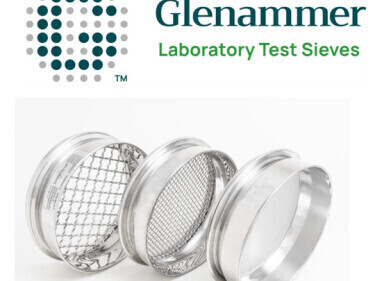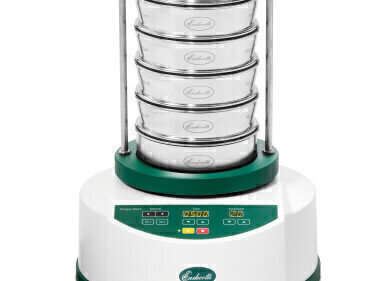Sieves
Particle Sizing using Laboratory Test Sieves
Aug 09 2017
A Laboratory test sieve is an instrument which is used for the measurement of particle size. In its most common form it consists of a woven wire screen, with square apertures, rigidly mounted in a shallow cylindrical metal frame. For coarse sieving a perforated plate screen with square or round holes may be used in place of wire mesh. Square hole perforated plate sieves range down to 4 mm and round hole sieves down to 1 mm aperture.
The sizes of solid particles from 125 mm down to 20 μm can be measured rapidly and efficiently by means of standard test sieves. Special sieves with apertures smaller than 20 μm are available, but it should be appreciated that the finer a screen is, the more easily will certain types of particulate solids tend to block or blind the apertures. Nevertheless, 'micro' sieving can be carried out down to 5 μm using special techniques.
Particle size, as measured by test sieving, may be specified simply by quoting two sieve sizes, one through which the particles have passed, and the other on which they are retained, i.e. the particle size distribution.
Test sieving is not the only method available for particle size analysis, but it is certainly the most widely used and probably the most important. A short list of some of the more common methods, together with their effective size ranges, is given in Table 1.
Advantages of Sieving
Perhaps the biggest advantage of test sieving is that it so frequently happens to be the only suitable method of size analysis for a particular purpose. However, even when there is a choice of method, test sieving generally proves to be the most convenient one. It is a quick and reliable method of size analysis, equally suited to accurate scientific research work or routine analysis under industrial conditions. Tests can be performed at almost any location.
No complicated apparatus is demanded. A nest of sieves and a simple laboratory balance will suffice in most cases. In fact, rapid size checks can often be made on-site at a particular plant with the aid of a rough pair of scales.
The technique of test sieving is basically simple. No specialised knowledge or skill is needed; care and diligence are the main requirements. Process operators can easily be trained to carry out sieve tests.
When the size distribution of a sample has been determined by test sieving, the material becomes separated into several fractions. This is another important attribute. These fractions are not contaminated, nor have their chemical or physical properties been altered. They are, therefore, available for further inspection or independent analysis if required.
The above testing procedure of sieving by hand can be tedious and the accuracy of the method may also depend to a considerable extent on the operator who performs the test. In machine sieving most of the burden is removed from the operator, and once the optimum conditions have been determined, reproducible results are rapidly obtained.
For example, the nest of sieves may be shaken for a certain predetermined time eg 5 mins and amplitude e.g. 1.5 mm. This ensures that results from different labs can be compared with quite a degree of accuracy.
Whether you are looking for test sieves or sieve shakers, Endecotts can meet your needs with quality equipment.
Digital Edition
Lab Asia 32.2 April
April 2025
Chromatography Articles - Effects of small deviations in flow rate on GPC/SEC results Mass Spectrometry & Spectroscopy Articles - Waiting for the present to catch up to the future: A bette...
View all digital editions
Events
Apr 09 2025 Tokyo, Japan
Apr 22 2025 Hammamet, Tunisia
Apr 22 2025 Kintex, South Korea
Analytica Anacon India & IndiaLabExpo
Apr 23 2025 Mumbai, India
Apr 23 2025 Moscow, Russia






















